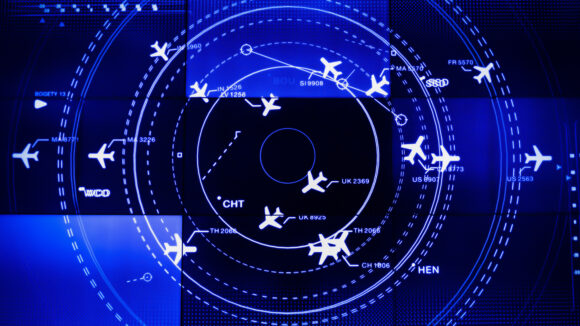U.S. Transportation Secretary Sean Duffy on Thursday will call for tens of billions of dollars to overhaul America’s strained air traffic control system to address crumbling infrastructure, dramatic staffing shortfalls and failing technology.
Key questions remain unanswered: Will it work? How long will it take? How much will Congress agree to spend? How will the government avoid the mistakes of prior reform efforts?
Duffy, who will be joined by the CEOs of the largest five U.S. airlines on Thursday to unveil the Trump administration plan, has said the project will take three or four years.
“You are starting to see cracks in the system,” Duffy said last week. “Everything—the hardware and the software—has to be redone.”
President Donald Trump, in a post on his social media platform before the announcement, blamed current air traffic control problems on the previous Biden administration and vowed “I WILL FIX IT.” He offered no details about the plan.
The Federal Aviation Administration’s air traffic control network’s manifold woes have been years in the making, but a rush of high-profile mishaps, near-misses and a catastrophic crash in January have spiked public alarm and prompted new calls for action.
A mid-air collision between an American Airlines regional jet and an Army Black Hawk helicopter in January killed 67 people near Reagan Washington National Airport. On Thursday, another Army helicopter forced two flights to abort landings at Reagan.
Last week, controllers overseeing traffic at Newark Liberty International Airport lost communications with airplanes for at least 30 seconds because of a telecommunications and radar failure. Since then, hundreds of flights have been canceled or diverted at the airport just outside New York City.
A series of near misses between airplanes in recent months has further exposed the strain on air traffic control facilities and raised questions about pilot training amid repeated calls for reforms for years.
Fixing the system is a daunting task. Many of the 520 airports overseen by the FAA need new runway safety technology so controllers don’t rely on binoculars to see airplanes.
In 2022, for example, the FAA said it was working to end a long-ridiculed, decades-old practice of air traffic controllers using paper flight strips to keep track of aircraft. But adopting the change at 49 major airports will take the FAA until late 2029.
FOUR DAYS OFF EACH MONTH
The FAA is currently about 3,500 air traffic controllers short of targeted staffing levels and nearly all control towers have staffing shortages. FAA controller staffing has been relatively flat in recent years—despite significant hiring—and is down 10% from 2012 because of retirements and trainees failing to complete requirements.
Newark’s airport has become the poster child for air traffic control issues. After the 30-second communications lapse, several controllers took leave on the same day, compelling United Airlines to cut 35 daily Newark flights—or 10% of its schedule.
At many facilities, controllers are working mandatory overtime of up to 12 hours a day and six-day work weeks to cover shortages. That leaves just four days off each month for what air safety experts widely agree are high-stress jobs.
The FAA, which said in March it planned to hire 2,000air traffic controller trainees this year, will offer retirement-eligible controllers who are under the mandatory retirement age of 56 a lump sum payment of 20% of their basic pay for each year they continue to work.
The Government Accountability Office in September said the FAA must take “urgent action” to address aging air traffic control systems.
GAO said 51 of the FAA’s 138 air traffic control systems are unsustainable. The FAA told the GAO last year not to plan to complete modernization projects for many systems for at least a decade.
Former Acting FAA Administrator Billy Nolen told Reuters “it’s been a journey of incrementalism with the FAA—some things we got right, some things left to fester over time.” One big question, he said, is who will oversee the project.
Trump has said a large company like Raytheon or IBM could be in charge.
It takes years for the FAA to replace outdated systems.
In January 2023, the failure of a key pilot messaging system disrupted more than 11,000 flights in the first nationwide U.S. ground stop since 2001. The FAA said last month it now plans to deploy a new “Notice to Airmen” system by September after two recent failures of the current system.
A November 2023 report from an independent FAA panel found the agency’s air traffic communications systems have been outdated for years and the agency can no longer get spare parts for many systems.
It cited aging FAA air traffic facilities with leaking roofs, broken elevators and heating and air conditioning systems and ancient surveillance radar systems that must soon be replaced at a cost of billions of dollars.
In 2017, then-President Donald Trump called for privatizing the air traffic control system by 2020—a plan that went nowhere.
“We’re proposing to take American air travel into the future finally,” Trump said in 2017. “Our air traffic control system is stuck painfully in the past… We’re still stuck with an ancient, broken, antiquated horrible system that doesn’t work.”
Was this article valuable?
Here are more articles you may enjoy.



 Senators Launch Probe Into Demotech’s Ratings in Florida
Senators Launch Probe Into Demotech’s Ratings in Florida  Waymos Froze, Blocked Traffic During San Francisco Power Outage
Waymos Froze, Blocked Traffic During San Francisco Power Outage  Court Ruling Could Help Shed Light on Owners of Litigation Funders, Medical Clinics
Court Ruling Could Help Shed Light on Owners of Litigation Funders, Medical Clinics  Injured Pedestrian Strikes Out on PIP Benefit Because Car She Dodged Never Struck Her
Injured Pedestrian Strikes Out on PIP Benefit Because Car She Dodged Never Struck Her 

